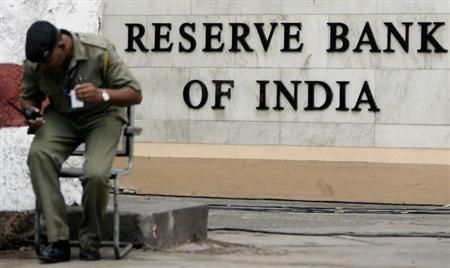 The central bank is committed to keep the banking system in a neutral zone on liquidity from a typical deficit mode.
The central bank is committed to keep the banking system in a neutral zone on liquidity from a typical deficit mode.
The Reserve Bank of India on Thursday offered to buy Rs 10,000 crore (Rs 100 billion) of bonds from the secondary market, continuing to infuse durable liquidity in the system to create a money base for an economy that would demand more cash in a post-monsoon demand-led environment.
Under RBI’s new liquidity framework, the central bank is committed to keep the banking system in a neutral zone on liquidity from a typical deficit mode.
The liquidity went into a surplus Rs 4,000 crore (Rs 40 billion) mode recently, from a deficit of Rs 2 lakh crore (Rs 2 trillion) in March.
So far this financial year, the central bank has infused Rs 70,000 crore (Rs 700 billion) of durable liquidity through buying bonds under its open market operations.
Estimates vary, but the market largely expects the central bank to buy another equivalent amount, if not more, for the rest of the financial year.
The proposed Rs 10,000 crore (Rs 100 billion) of bond purchase would be done on Monday.
This comes after the payment of the first tranche of advance tax for FY17. The payment of advance tax is expected to suck liquidity out of the system.
Rural demand is expected to pick up if the monsoon is good, which will likely to pull up other pockets of the economy.
This could increase the demand for bank credit.
The central bank will have to increase its money supply at that time to meet the demand.
Money supply can be increased in the economy through dollar purchases, infusing an equivalent amount of rupee liquidity in the system, or through buying bonds and releasing liquidity.
Only printing more money is no longer the practice.
Increasing the money supply through forex intervention would be challenging, as foreign inflow in the economy has been tepid and is unlikely to improve in the later part of the year, as the US Federal Reserve would most certainly increase its interest rate, which would lead to capital outflow from emerging markets, including from India.
Hence, the central bank would most likely be reliant on the bond purchase route.
The present reserve money growth at 13.4 per cent is healthy, especially compared with last year’s 10.3 per cent.
The rise in reserve money could indicate the central bank is preparing for a demand pick-up in the later part of the year.
“Our estimates suggest if RBI needs Rs 2.1-lakh crore (Rs 2.1-trillion) base money to support economic growth, Rs 1.05 lakh crore (Rs 1.05 trillion) would come from purchase of foreign assets (after adjusting for FCNR outflows) and the remaining amount will need to come from purchase of domestic assets,” IDFC Bank wrote in a research report.
IDFC Bank estimates RBI will conduct overall OMO purchase in FY17 of Rs 1.55-2.05 lakh crore (Rs 1.55-2.05 trillion), of which Rs 70,000 crore (Rs 700 billion) has been done so far.
According to Debashis Mitra, dealer at SBI DFHI, a primary dealer that underwrites government bond auctions, RBI will need to do OMO purchase of at least Rs 50,000 crore (Rs 500 billion), in addition to intervention in the foreign exchange market to meet liquidity demand arising out of FCNR (foreign currency non-resident) deposit maturity and credit growth, led by revival in consumer and rural demand.
RBI estimates FCNR (B) would result in outflow of $20 billion. Such dollar supply will suck out rupee liquidity and the central bank will have to supply it through bond purchases, dealers say.
The situation will get compounded if the central bank does not manage to accrue forex reserves from portfolio flows, but at the same time has to provide a portion of the FCNR deposits from its reserves.
RBI said in its second bi-monthly monetary policy review that it could have to supply dollars if exporters decide to roll over their forwards contracts instead of parting with dollars.
Since March, RBI has added about $3.3 billion to its reserves, but it has to add more.
Even as OMOs are conducted to ease liquidity, the rise and fall of bond yields is a by-product of the operation and not a concerted yield management effort, say experts.











